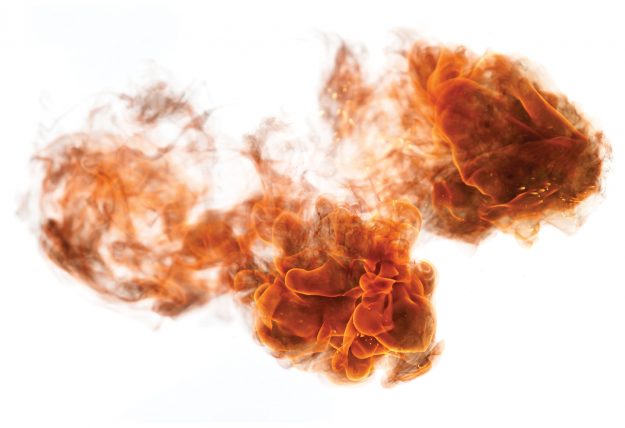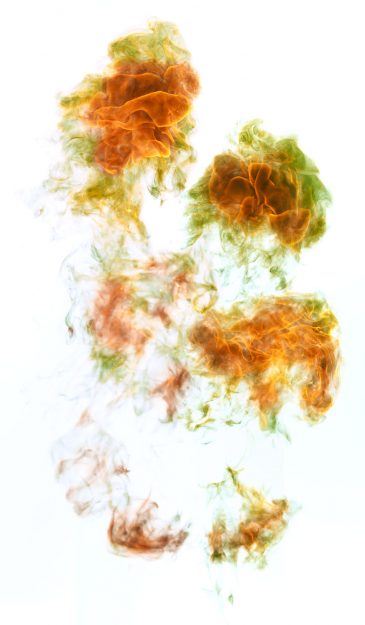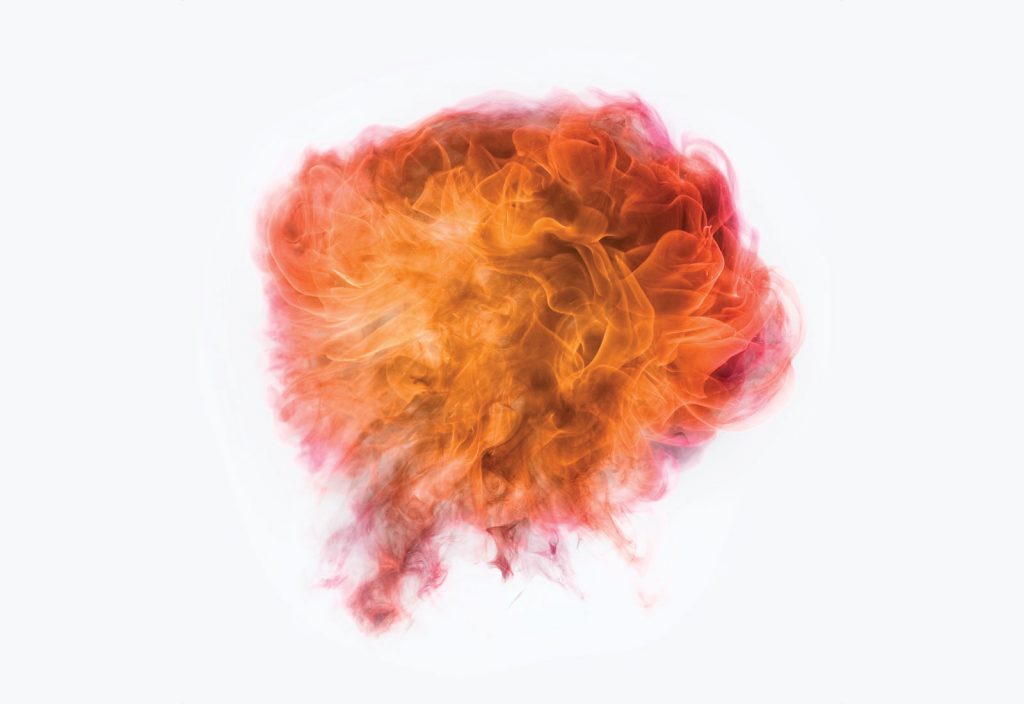On an April morning in 1998, a 60-year-old man stepped into a public toilet in New Delhi and doused himself in gasoline. Outside, the police had just broken up a six-week-old hunger strike led by members of the Tibetan Youth Congress, an organization calling for Tibetan independence. Setting himself on fire, the man emerged flailing and jumping before bringing his hands together in prayer. Thupten Ngodup, a former monk, had become the first Tibetan to self-immolate in protest of China’s decades-long occupation of Tibet. He died soon after in a Delhi hospital following a personal visit from Tenzin Gyatso, the 14th Dalai Lama.
Like so many dramatic but brief moments that take the international stage, Thupten Ngodrup’s self-immolation was soon forgotten outside Tibetan activist circles. It wasn’t until over a decade later, on February 27, 2009, that his deed took on new significance. On that day, a monk named Tapey became the second Tibetan to self-immolate as a form of political protest. This time, however, the radical act triggered a series of self-immolations in the years that followed. At the time of this writing, 121 Tibetans, including Thupten Ngodup, have self-immolated in protest of China’s rule over Tibet.
Since self-immolation is relatively new to Tibetan Buddhism, practitioners and scholars alike are still struggling to understand it. Although some commentators have considered it contrary to Buddhism’s basic tenets, the past tells a much more complex story. In Chinese Buddhism, for example, self-immolation has a long and well-documented history. From written records, we know of several hundred Chinese Buddhist monks, nuns, and laypeople who offered up their bodies for a variety of reasons—though not usually in protest against the state—from the late 4th century to the present. The majority burned themselves to death, often in staged public spectacles. (Scholars use the term auto-cremation for this rather than the more common self-immolation, which means “self-sacrifice.”) The numerous accounts and discussions of self-immolation in Chinese records make it clear that many Buddhist authors did not condemn it as an aberrant or deviant practice but understood it as a bodily path to awakening. For Chinese Buddhists, in fact, auto-cremation belonged to a set of practices collectively known as “abandoning the body.” Besides burning themselves to death, such practitioners also let insects feed on their bodies, sliced off their own flesh, burned off fingers or arms, or burned incense on the skin. Others starved, stabbed, or drowned themselves, leapt from cliffs or trees, fed themselves to wild animals (usually tigers), or mummified themselves.
Auto-cremation in particular drew on a range of influences, including scriptures such as the Lotus Sutra, along with indigenous rituals like burning the body to bring rain. The practice was reinforced and vindicated by Buddhist scriptures written in China and by the inclusion of the biographies of auto-cremators within the Buddhist canon. The increasing number and variety of precedents as well as the high status of some auto-cremators further legitimized the practice. The mass of data that we have about self-immolation in Chinese history shows that self-immolation was not considered a marginal or deviant act. On the contrary, it was relatively common and largely respected within the tradition. In fact, the Chinese example has motivated Buddhist practitioners well into modern times. It is known, for example, that Thich Quang Duc, the scholarly Vietnamese monk who burned himself to death in 1963 to protest the South Vietnamese government’s treatment of Buddhists, was conversant not only with the scriptural sources for auto-cremation—he chanted the Lotus Sutra every day—but also with the history of Chinese auto-cremators who had gone before him.
In traditional China, many individual acts of self-immolation were inspired by a literal reading of certain scriptures, particularly the Jataka tales (accounts of former lives of the Buddha Shakyamuni), and the Lotus Sutra. Chapter 23 of the Lotus is devoted to an account of the Bodhisattva Medicine King, who burns his body in homage to the relics of a buddha. Auto-cremators often indicated their wish to emulate Medicine King. While contemporary readers may prefer to insist that such scriptural stories are intended only allegorically, Chinese readers in premodern times had no reason to read these tales other than as true records of the acts of advanced beings. The Lotus Sutra provided not only a template for auto-cremation by showing readers how and why it might be performed, but also the liturgy: auto-cremators chanted the chapter on Medicine King as they enacted it.
In the Lotus Sutra the giving of “inner wealth” (that is to say, the body) is described by the buddhas as far surpassing the most extravagant offerings of external wealth and even the donation of one’s own wife and children. The buddhas’ enthusiasm for the offering of the body caught the attention of Medicine King’s Chinese imitators, who took it as an unequivocal endorsement of auto-cremation. Shakyamuni Buddha himself also extols Medicine King’s act in the sutra, and recommends to ordinary practitioners that one who burns “a finger or even a toe as an offering to a buddha stupa, he shall exceed one who uses realm or walled city, wife or children, or even all the lands, mountains, forests, rivers, ponds, and sundry precious objects in the whole thousand-millionfold world as offerings.” By saying this, the Buddha indicates that auto-cremation is not restricted to advanced bodhisattvas but may be practiced by anyone who wishes to attain buddhahood.
The story of Medicine King inspired more than imitation. Zhiyi (538–597), one of the most influential Buddhist figures in the history of East Asia, is said to have become awakened on reading this chapter of the Lotus Sutra. Jizang (549–623), another major Buddhist thinker, wrote that the bodhisattva uses his own life “to repay the kindness [of the Buddha] and pay homage to him, thus propagating the sutra, creating merit for humans, teaching, and converting myriad beings.” Chinese commentators on this chapter emphasized the altruistic nature of surrendering the body.
By burning their bodies as prescribed by this chapter of the Lotus Sutra, Chinese monks and nuns took on the role of the devoted bodhisattva. Some mimicked the way Medicine King consumed incense and oil and wrapped his body in oil-impregnated cloth before his auto-cremation; others burned themselves in front of stupas or before large audiences. Evidence of their success in emulating him was demonstrated by lights and signs in the sky, miraculous trees growing in practitioners’ cells or at the site of the act, dreams and portents, and their relics. Many Buddhists took the Lotus Sutra at its word, adopted the “difficult deeds” of Medicine King, and considered their actions capable of liberating others from samsara.
The offering of the body is a theme that can be found throughout Buddhist literature. Self-immolation is usually presented as a way of cultivating the perfection of generosity, considered fundamental to the bodhisattva path by which buddhahood is attained. In the Mahayana scriptures, the Chinese were presented with the blueprints for making bodhisattvas, and instructed that acts of extreme generosity were a necessary part of that process. Some scriptures insisted that the ability to give away the body was not restricted to advanced beings such as Medicine King; even those just setting out on the bodhisattva path must be able to surrender their own bodies dispassionately. The scriptures present stories of mythic Buddhist heroes of the past as the paradigms and exemplars of true generosity, and Chinese Buddhists were acutely aware that tales of bodhisattvas such as Medicine King had been taught by the Buddha himself. They could point to many places in the holy scriptures where the Buddha had instructed them to do extraordinary things with their bodies if they wished to advance on the path to buddhahood.
The Samadhiraja (King of Samadhi) Sutra contains a dramatic and extended description of an offering similar to that of Medicine King. The auto-cremation episode centers on a junior bodhisattva who offers his own body to relics. But this bodhisattva, called Virtue of Calm Tranquillity, is explicitly and repeatedly described as a fully ordained monk, not a layman like Medicine King in the Lotus Sutra. The text also stresses that Virtue of Calm Tranquillity felt no pain, but only joy and euphoria. Scriptures emphasized the impassive mental state of the bodhisattva; this attitude was one that many erudite thinkers saw as characteristic of true self-immolators. Depictions of self-immolation in the biographies of monks and in the scriptures did not focus on the pain of the act; any suffering in the process was secondary to the virtue of the precious gift of the body.
The trope of self-immolation was popular not just in China but also elsewhere in the Buddhist world. A Pali text compiled in Burma in the 11th or 12th century tells how King Ashoka wrapped his body in cotton and had his body soaked in oil prior to burning himself before a stupa containing relics of Shakyamuni. Birth Stories of the Ten Bodhisattvas, another late Pali text, contains many stories featuring the classic themes of the offering of children, the head, the eyes, and so on. The story of the Buddha Ramaraja relates that in a former life he saw the Buddha Kassapa and thought, “A perfect buddha is very rare; what is the use to me of this disgusting life; it is worthwhile sacrificing one’s life for the Buddha.” He wrapped himself in oil-soaked cloth and burned himself before Kassapa. Kassapa made a prediction of his future buddhahood, and at the site of his offering a lotus bud bloomed. This example offers some ways of understanding what role auto-cremation could play on the path to buddhahood. Like the Burmese text, the scripture on the ten bodhisattvas emphasizes the bodhisattva’s calm state of mind as he burns. It explains that after his auto-cremation he was reborn in Tushita heaven—the abode in which a bodhisattva enjoys his last rebirth before descending to earth and attaining awakening beneath the Bodhi tree. The witnesses to his auto-cremation are rewarded with a blossoming lotus on the site of his offering. Finally, the Buddha spells out in detail the karmic effects of the bodhisattva’s self-immolation: when he becomes a buddha, he will be extremely large, live a long life, and possess a marvelously radiant body.

Just the same, Chinese Buddhists struggled to make sense of the practice. While self-immolation was extolled and explicitly endorsed in some fundamental Buddhist scriptures, the monastic regulations (Vinaya) prohibited monks from killing or harming themselves. Another argument against the practice was that auto-cremation entailed killing the various types of parasites that dwell on or in the body. Yijing (635–713), a famous Chinese pilgrim to India, wrote a lengthy critique of auto-cremation by monks. He claimed that monastic auto-cremators were overzealous practitioners who were unfamiliar with the range of Buddhist literature and had failed to realize that the Lotus Sutra’s exhortation to offer a finger or toe was intended only for laypeople. The monk’s first duty, he said, was to follow the Vinaya. There was also no shortage of objections to lay auto-cremation from both Buddhist authors and secular authorities. The monk Zhuhong (1535–1615) criticized those who attempted to imitate an advanced bodhisattva and claimed that they would only withstand temporarily the pain of auto-cremation thanks to the archenemy of awakening, Mara.
Despite Yijing’s lengthy and strident objections, most auto-cremators in China were monks. How did they find textual justification for their actions? Two important scriptures composed in China—the Brahma Net Sutra and the Sutra of the Heroic March—describe auto-cremation as a legitimate practice for ordinary Buddhist monks and nuns. But some Chinese Buddhist writers simply argued that the attitude or intention of the bodhisattva trumped any concerns about suicide and the precept against killing. Daoshi (596–683), for example, claimed that since the bodhisattva is intent on leaving samsara in order to worship the buddhas and has developed compassion toward all beings, he has no intention of harming others, and so his giving up of the body only generates merit. Thus, there is no offense against the precept. The most fully developed endorsement of self-immolation was written by Yanshou (904–975), a monk who was as well known for his expertise in matters of the Vinaya as he was for his skill in meditation. He identified the mind and intention of the practitioner as the most significant factors in determining the validity of the act.

For Daoshi, Yanshou, and many other commentators on self-immolation, the act of offering the body with the right intention—for other beings, or in homage to the dharma or to buddhas—was guaranteed to result in awakening, and with it the ability to save other beings. The potential benefits of this practice, which could rapidly accelerate the practitioner far along the path to buddhahood, thus outweighed any proscriptions in the Vinaya against suicide or self-harm. While the Buddhist tradition extols a “middle way” that avoids extremes of both hedonism and ascetic behavior, for Chinese defenders of self-immolation the practice of abandoning the body that was repeatedly lauded in key Mahayana sutras was almost a necessity for advanced bodhisattvas. The ability of those bodhisattvas to save countless beings from the horrors of samsara trumped the petty restrictions of the Vinaya. Indeed, the special status of bodhisattvas and their practices were encoded in the bodhisattva precepts, which were understood to supersede the monastic Vinaya. Also, from a cultural standpoint, Chinese Buddhists were removed from the immediate context of the early sangha in India, where it was important to distinguish Buddhist modes of cultivation from the extreme physical practices of contemporary Indian ascetics. In China, there was no similar ascetic practice for the sangha to define itself against, and less necessity to exclude various kinds of mortification from the Buddhist repertoire.
The offering of the body, by fire or other means, in the Mahayana scriptures and in real life is a point of intersection of the preeminent virtues in Buddhist ethics. Buddhist practitioners understood self-immolation in terms of the perfections (paramitas) of charity (dana), vigor (virya), and patience (ksanti). The major motivation, whether for advanced bodhisattvas or for ordinary beings, was often expressed in terms of the primary Buddhist virtue of compassion (karuna). Self-immolators were understood to be acting not only for themselves but also for the good of others. Their biographies often emphasized both the benefits to their immediate communities and the larger resonances of their acts on the entire cosmos.
Although the current wave of Tibetan self-immolations must be understood in its contemporary sociopolitical context, we should not be too hasty to assume that the long history and deep roots of Buddhist self-immolation do not also have some relevance to the issue. While Chinese self-immolators acted from a variety of motives, and not simply to protect the sangha against the power of the state, they could find justification for their acts in some of the most important visions of the bodhisattva path known to them. Self-immolation was always regarded as an extreme act, but in the eyes of many Buddhists, the creation of extraordinary beings such as bodhisattvas required the performance of equally extraordinary acts.
Thank you for subscribing to Tricycle! As a nonprofit, we depend on readers like you to keep Buddhist teachings and practices widely available.
